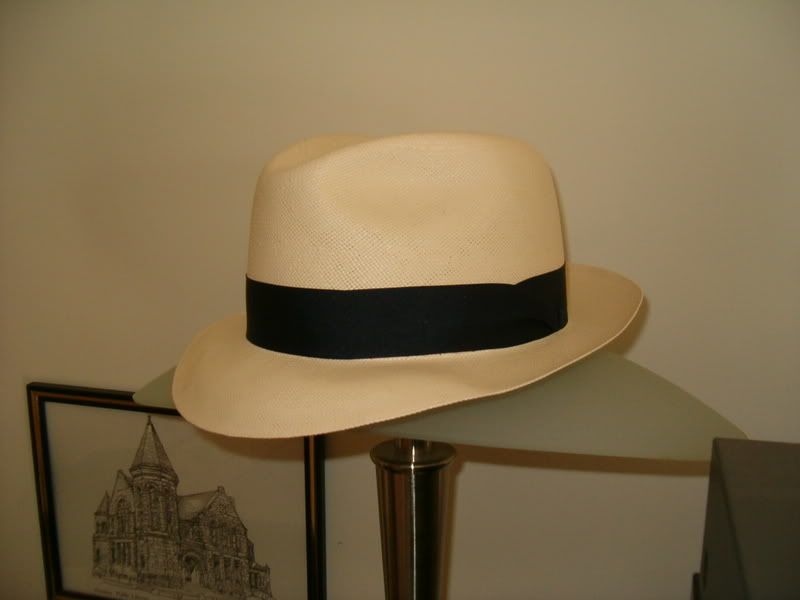Woodfluter
Practically Family
- Messages
- 784
- Location
- Georgia
I apologize if this has been answered fully, but my searches so far haven't turned up answers. Maybe you all can help. [huh]
Straw hats, including the varieties from genuine Toquilla fiber Panamas through raffia, buntal, abaca and even Shantung, are said to do poorly in the rain. Or so I've repeatedly heard here.
What I haven't found so far is the exact nature of the damage, whether it is reversible, how it applies to these disparate materials, and whether measures (apart from covering it with some horrible plastic) can alleviate or prevent it.
I would like to wear straw more often, but I live in a changeable and unpredictable climate for precipitation and sometimes am out of doors for half a day or more without shelter.
Long ago I had a woven raffia (so I've since deduced) that held its shape through a number of soakings, and might have shrunk a tad but never lost its shape. I also know enough real (not wannabe) cowboys who wear Shantung hats in all kinds of weather, and the hats end up looking pretty grungy and stained but don't fall apart. I've recently bought a braided and sewn raffia hat and have a Montecristi on order, so I'm wondering...
1. What kinds of damage do straw hats suffer? Is is shrinkage, losing shape, staining, disintegration, or some combination of those?
2. How do these kinds of damage pertain to the different straw hat materials? In other words (pulling this out of thin air), will a Panama lose shape, a Buntal fall apart, a raffia shrink, a Shantung discolor, etc?
3. Can the various sorts of damage be prevented by application of waterproofing?
4. Can the damage be repaired?
5. Which kind of straw is least susceptable to damage from wetting?
6. Does the construction matter? E.g., will a braided and sewn raffia be less prone to damage than a woven one, or more so?
I can think of more questions, but I think that will be enough to disturb the peace.
Best wishes and hopes for some enlightenment from muggy Atlanta,
- Bill
Straw hats, including the varieties from genuine Toquilla fiber Panamas through raffia, buntal, abaca and even Shantung, are said to do poorly in the rain. Or so I've repeatedly heard here.
What I haven't found so far is the exact nature of the damage, whether it is reversible, how it applies to these disparate materials, and whether measures (apart from covering it with some horrible plastic) can alleviate or prevent it.
I would like to wear straw more often, but I live in a changeable and unpredictable climate for precipitation and sometimes am out of doors for half a day or more without shelter.
Long ago I had a woven raffia (so I've since deduced) that held its shape through a number of soakings, and might have shrunk a tad but never lost its shape. I also know enough real (not wannabe) cowboys who wear Shantung hats in all kinds of weather, and the hats end up looking pretty grungy and stained but don't fall apart. I've recently bought a braided and sewn raffia hat and have a Montecristi on order, so I'm wondering...
1. What kinds of damage do straw hats suffer? Is is shrinkage, losing shape, staining, disintegration, or some combination of those?
2. How do these kinds of damage pertain to the different straw hat materials? In other words (pulling this out of thin air), will a Panama lose shape, a Buntal fall apart, a raffia shrink, a Shantung discolor, etc?
3. Can the various sorts of damage be prevented by application of waterproofing?
4. Can the damage be repaired?
5. Which kind of straw is least susceptable to damage from wetting?
6. Does the construction matter? E.g., will a braided and sewn raffia be less prone to damage than a woven one, or more so?
I can think of more questions, but I think that will be enough to disturb the peace.
Best wishes and hopes for some enlightenment from muggy Atlanta,
- Bill



